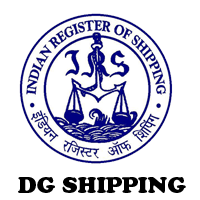What is Glaucoma?
Glaucoma is caused by imbalance in the production of fluid named aqueous humor in the eye. This imbalance leads to increase in the pressure in the eye, which is called Glaucoma. Due to Glaucoma, the blood supply to the vision cells decreases thus destroying the nerves and leading to side vision loss, visual disability, and progressing to blindness.
Glaucoma has emerged as leading cause of blindness in the eye and doesn’t have any early symptoms. By the time Glaucoma is detected in most of the cases, it is often too late leading to irreversible damage to the eye.
Here are the key features for Glaucoma:
• Increased intraocular pressure: The pressure inside the eye is measured with non-contrast tonometer to detect the disease progression.
• Optic nerve cupping and atrophy: Optic nerve, or nerve of sight, dries up as it suffers damage due to high pressure inside the eye.
• Visual field and nerve fiber layer defects: Nerve fibers begin to die and these denote one of the earliest changes with the onset of Glaucoma. An OCT is used to detect the damage of nerve fiber layers.
What are the suggested screenings for the suspected patients?
• Those with family history of glaucoma: For people whose parents or relatives suffer from glaucoma require regular screening at young age to detect the disease or any signs of development at early stage.
• The forty plus age group: People who have crossed the 40 years of age should undergo glaucoma screening every 2 years, even if they have never had family history of glaucoma.
• High plus or minus numbered glasses: We recommend people wearing high plus or minus numbered glasses to undergo complete eye checkup every year.
• People with high intra-ocular pressure: Those who suffer from high intra-ocular pressure need a complete glaucoma workup done, which often includes gonioscopy, corneal thickness measurement, perimetry, funduscopic examination coupled with regular followup every 6 months.
Treatment approach for Glaucoma
The treatment options for glaucoma are targeted to lower the pressure in the eye to the level that the damage to optic nerve should not worsen or develop. For this three treatment approaches can be undertaken:
Eye drops: Eye drops are prescribed to decrease the eye pressure by reducing the production of aqueous fluid within the eye or by promoting the drainage of the fluid.
Laser treatment: Laser treatment is often sought to reduce the medications to control pressure. Laser iridotomy involves making a hole in the iris to restore free flow of fluid.
Trabeculectomy: It is surgical approach used in advanced cases where miniature instruments are used to create a drainage channel to help the fluid leave the eye. In case of the failure of this surgery, glaucoma valves may need to be implanted. However, there is very minimal likelihood of failure of modern surgery.
Glaucoma treatment AT Rana Hospital
If you have any symptoms that indicate glaucoma, its best to consult Dr. Brijinder Singh Rana at Rana Hospital in Ludhiana. He is highly experienced in Glaucoma cases to help you get it treated timely. We at Rana Hospital offer you with best value glaucoma treatment in Punjab. Our range of ophthalmology services include but are not limited to cataract, LASIK, diabetic retinopathy treatment, vitreoretinal surgery, restorative surgery, and other ancillary eye services.
Find out more about glaucoma and other procedures by contacting us at: +91-9815709777.
Our Empanelments
we’ ve built a long standing relationship based on trust







